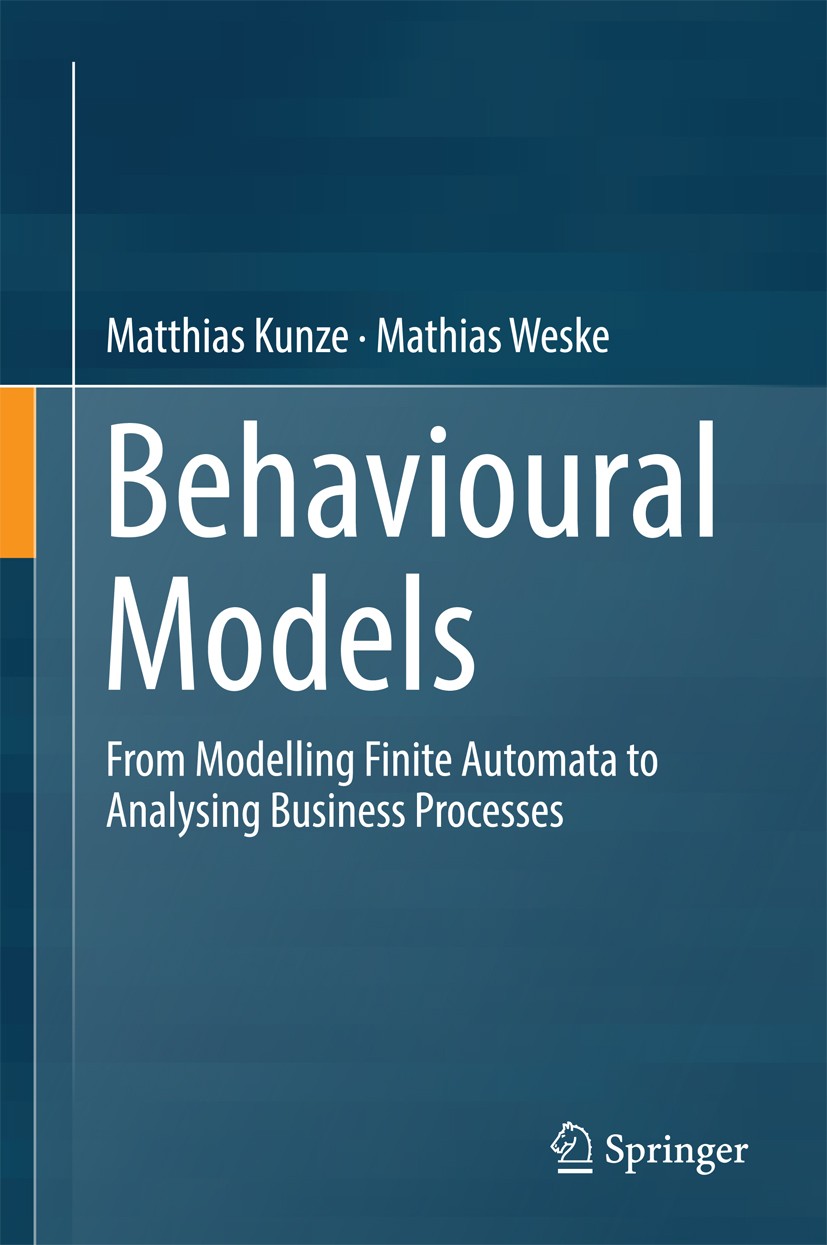| 期刊全稱 | Behavioural Models | | 期刊簡(jiǎn)稱 | From Modelling Finit | | 影響因子2023 | Matthias Kunze,Mathias Weske | | 視頻video | http://file.papertrans.cn/183/182919/182919.mp4 | | 發(fā)行地址 | Presents a wide spectrum of modelling techniques to capture and analyse the behaviour of discrete dynamic systems.Delivers an easily accessible, yet formally grounded overview of behavioural modelling | | 圖書(shū)封面 |  | | 影響因子 | This textbook introduces the basis for modelling and analysing discretedynamic systems, such as computer programmes, soft- and hardwaresystems, and business processes. The underlying concepts are introducedand concrete modelling techniques are described, such as finiteautomata, state machines, and Petri nets. The concepts are related toconcrete application scenarios, among which business processes play aprominent role. .The book consists of three parts, the first ofwhich addresses the foundations of behavioural modelling. After ageneral introduction to modelling, it introduces transition systems as abasic formalism for representing the behaviour of discrete dynamicsystems. This section also discusses causality, a fundamental conceptfor modelling and reasoning about behaviour. In turn, Part II forms theheart of the book and is devoted to models of behaviour. It details bothsequential and concurrent systems and introduces finite automata, statemachinesand several different types of Petri nets. One chapter isespecially devoted to business process models, workflow patterns andBPMN, the industry standard for modelling business processes. Lastly,Part III investigates how the behaviour of | | Pindex | Textbook 2016 |
The information of publication is updating

|
|
 |Archiver|手機(jī)版|小黑屋|
派博傳思國(guó)際
( 京公網(wǎng)安備110108008328)
GMT+8, 2025-10-15 11:28
|Archiver|手機(jī)版|小黑屋|
派博傳思國(guó)際
( 京公網(wǎng)安備110108008328)
GMT+8, 2025-10-15 11:28


